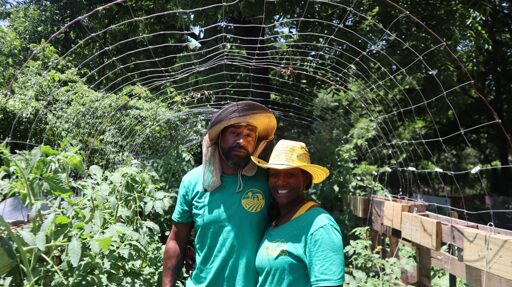- cross-posted to:
- greenspace@beehaw.org
- cross-posted to:
- greenspace@beehaw.org
In South End, the historically Black neighborhood of Little Rock, Arkansas, generations of community members without access to fresh fruit or produce relied on a singular corner store. Since its closure, limited transportation, among other interlocking oppressions, has further strained food access in the neighborhood.
On another corner in the same community stands an ungated lot with a newly constructed greenhouse built in the summer of 2024. Behind the greenhouse is a produce stand complete with index cards that have the names of vegetables and prices written in black. Small pots, benches, and flowers pepper the rest of the lot. Across the street is a backyard with a few rows of lush raised beds and pop-up tables called the cottage house.
This is Turtle Island G.K., an urban farm and food stand started by Gabriyel “Gabe” El-Bey. El-Bey is a Marine veteran and a descendent of the sharecroppers who died in the Elaine Massacre of 1919 when Black sharecroppers who organized for better wages were murdered by white vigilantes. It was one of the bloodiest racial conflicts in the history of Arkansas. More than 100 years later, El-Bey is still doing the vital work of feeding his community, despite many other Black Southern farmers living in rural areas getting away from land work in favor of finding a better life.
The movement to restore Black agricultural heritage has boomed alongside urban agricultural (UA) research, as Black communities in urban areas become litmus tests and basecamps for UA projects. This is often due to a combination of the higher rates of food apartheid and environmental racism experienced by Black communities and the ways that community green spaces have become creative resistance efforts. Efforts to reclaim Black land are also efforts to reclaim Black belonging and expertise in tackling agricultural issues. While there are now many stories across the mediasphere focused on the empowerment, agency, and resistance of Black communities fighting inadequate urban food systems, Black Americans’ cultural roots in agriculture descended from the South and did not vanish as part of the Great Migration. It is common for Black American descendents from the South to have seen their elders garden with whatever space they had, which is why collard greens and tomatoes are still commonly grown in Los Angeles backyards.


